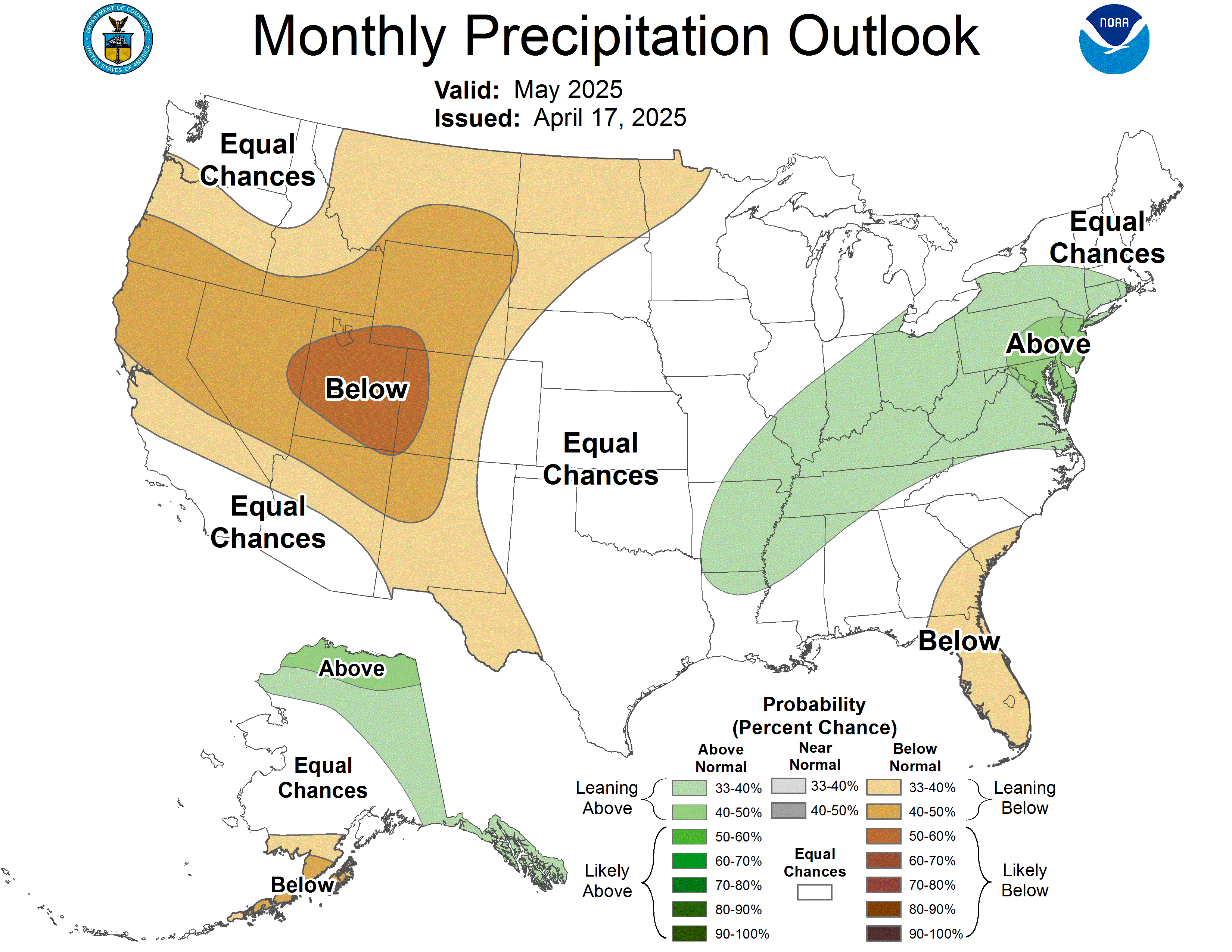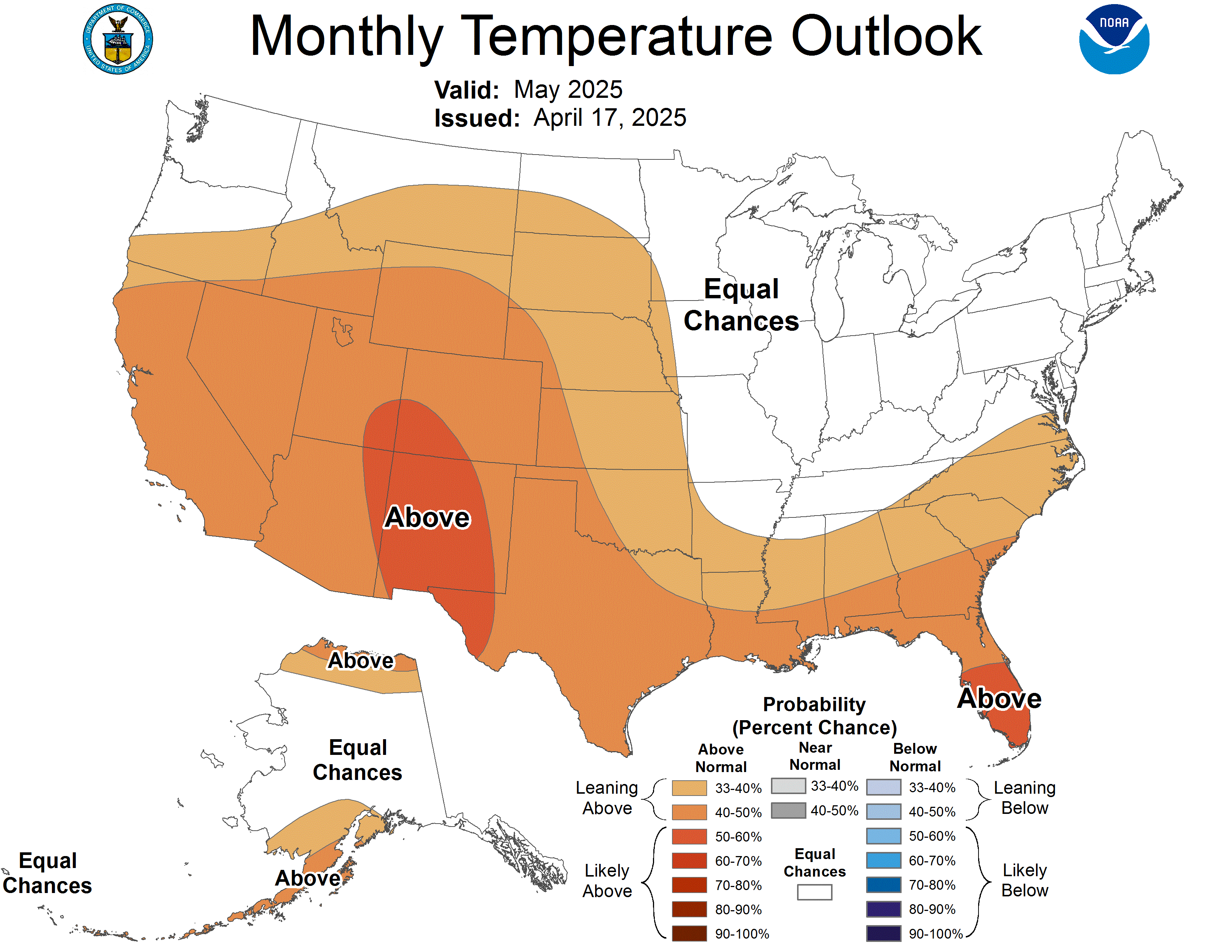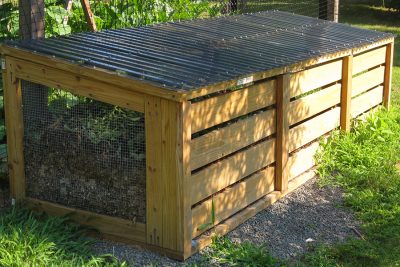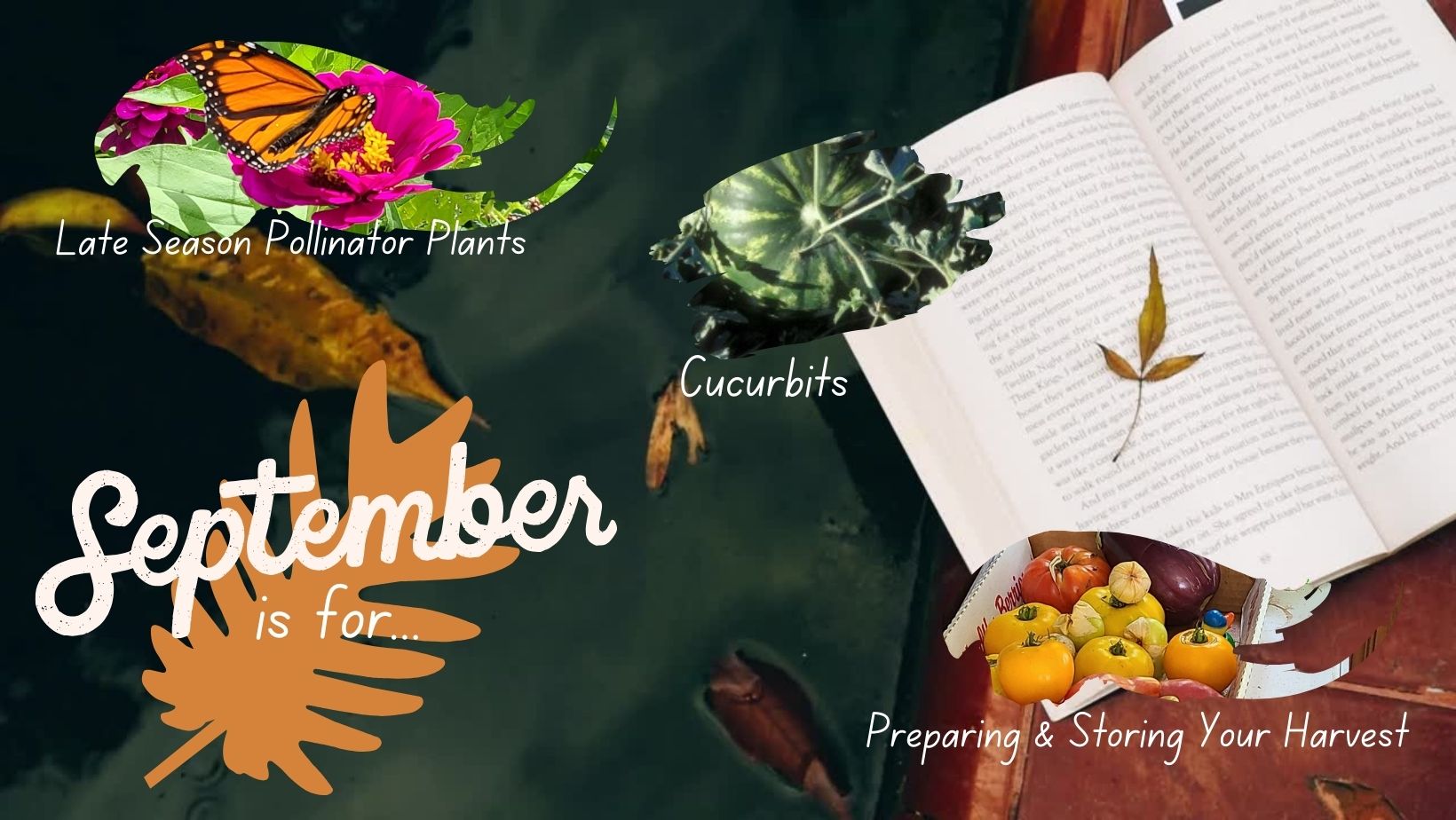
"By all these lovely tokens, September days are here. With summer's best of weather and autumn's best of cheer."
- Helen Hunt Jackson
Late Season Plants for Pollinators
As gardeners, it is important for us to be able to enjoy our gardens as long as possible into the colder months! As allies and companions to our beloved pollinators, it is part of our task to help provide food sources to help them prepare for the winter months as well.
Annuals
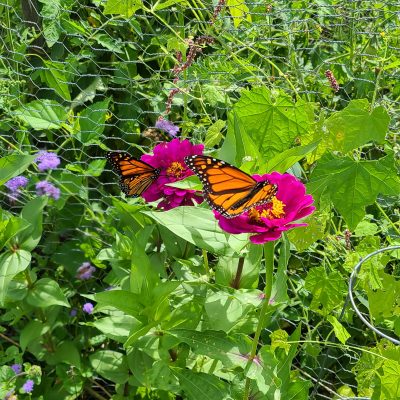
- Zinnias are a long-season pollinator plant that will continue to perform into the fall. You may even see them returning to garden centers to be included in fall containers.
- Other late season bloomers like Tithonia, Lantana, Marigolds, Sunflowers and Cosmos are particularly important food sources for migrating butterflies and other insects. Hummingbirds are very fond of lanatana nectar, so they will benefit as they migrate through in September.
The Fall Garden is Still Great for Pollinators
Perennials
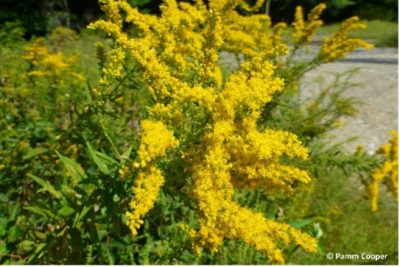 Native goldenrods (Solidago spp.) provide nectar and pollen for diverse species of insects and seeds for birds and small mammals. Different species bloom from August- late September or even into October, when other native plants are past bloom time. They are important sources of energy for migrating butterflies and for bees that are active late in the season.
Native goldenrods (Solidago spp.) provide nectar and pollen for diverse species of insects and seeds for birds and small mammals. Different species bloom from August- late September or even into October, when other native plants are past bloom time. They are important sources of energy for migrating butterflies and for bees that are active late in the season.
- Other late season pollinator plants include Echinacea, Rudbeckia, Sedum and Asters
Late Season Cucurbit Harvesting
Watermelons
Watermelons take 35-45 days to mature after flowering, but temperatures and variety will affect time to harvest To determine if a watermelon is ripe, use these signs:
- There is a curling tendril closest to the melon- this should turn brown and dry out
- Carefully turn melon over to see f the white blotch where soil contact was made is now yellow
- Rind should be dull, not shiny
- Thump the melon- sound should be hollow-sounding, deep and resonant. Unripe melons will have a higher pitched flatter sound
- Check the days to maturity as given on the seed packet. If it says 65 days, then it should be ripe at that time, but check above signs, too. If you do not know the variety, then use 1-4 as a reference.
Pumpkins/Gourds
This time of year is when pumpkins will start reaching maturity. Harvest will be here before you know it! Keep these things in mind while deciding "is it time?"
- Skin should be thick and pumpkins should be firm
- Leave the stem intact to ensure a longer shelf life
- Never lift or carry a pumpkin by the stem
- Read More Tips
Winter Squash
Winter squash have many of the same harvest characteristics as pumpkins and gourds.
- Similar to pumpkins, the skin should be hard and difficult to puncture with a fingernail
- Leaving 3-4 inches of stem attached helps preserve the fruit
- Read More Tips
Preparing and Storing your Harvest
The UConn Home & Garden Education Center is here to help you get your plants from seed to harvest!
While we're not able to answer your questions about what happens once the produce is picked, we do have partners who are here to help you with just that!
UConn's Food Safety program can take you "from Harvest to Feast!"
Native Plant Highlight: Shrub Dogwoods
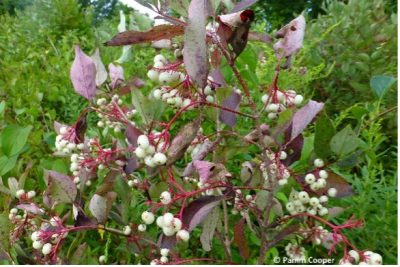
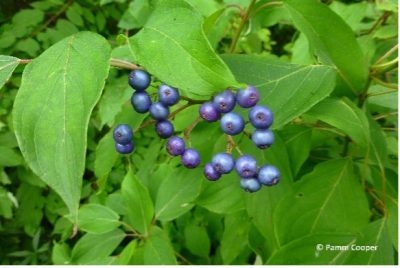
Shrub dogwoods like silky (Cornus obliqua) and red osier (Cornus sericea) and gray (Cornus racemosa ) not only provide food for pollinators in the spring, but they are an important source of food for birds and animals in late summer and fall. They are available at most garden centers that feature native plants and their a cultivars. Many can tolerate some shade and moist soils.
Vegetable Gardening Resources
During the growing season, UConn Extension publishes a regular pest alert. Additionally, the New England Vegetable Management Guide offers a lot of information about specific vegetable crops.
While the target audience for these publications is usually commercial growers, home gardeners can learn a lot from these materials including identification and management of common pests in your veggie gardens!
If you ever need confirmation on an ID or have additional questions about what you read in these reports, please do not hesitate to reach out to us at the Home & Garden Education Center! We're happy to help your gardens thrive.
UConn Fruit Update
The UConn Fruit Program publishes a fruit update, very similar to the IPM Vegetable Pest Alert. If you keep fruit trees, this may be a valuable resource for you! If you ever need help understanding how to apply these principles to your own home garden, let us know!
Knowledge to Grow On
Read our Ladybug blogs written weekly:
GMO Tomatoes A Summer of Flowers
What does A PB&J have to do with Garden Pests?
Upcoming Events and Things to Do
- The Mattabesett Trail is a 62-mile trail that features some of the most outstanding cliff views and ridge walking in Connecticut, especially on the western sections. It links to many state forests, land trust preserves and parks. Other sections have brooks, bogs, hardwood forests and high ledges looking over the Connecticut River.
- It's Apple Season! Visit a pick-your-own orchard, or find your favorite apple flavored treats starting this month!
- Farmer's Markets are still very active! Find one near you!
- The Big E is this month! Visit for agricultural displays, food, entertainment, and more! Starting Sept. 13th
- Sept 15-21 is National Indoor Plant Week.
Educational Opportunities & Workshops
- Letterboxing & Geocaching, September 12th, Hamden, CT
- Bat Appreciation Day - September 15th, East Granby, CT
- Bird Walk, September 21st, Milford, CT
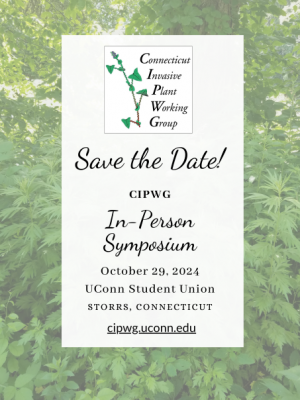
CT Invasive Plant Working Group
In-Person Symposium
October 29th, 2024
UConn Student Union
Storrs, CT
2024 UConn Master Composter Program
Interested in learning more about composting and sharing your knowledge with others? UConn will be holding its Master Composter program this September. The Master Composter program is a train the trainer program where participants will learn about the various aspects of composted and then donate a minimum of 20 hours volunteer time engaging in outreach projects that may include activities such as tabling at events, giving presentations or working with schools or community gardens. When outreach goals have been met, participants will be certified as Master Composters and receive a certificate of completion. There is a registration fee.
The 2024 program will be a hybrid program with two in-person Saturday sessions, September 14 & 28 along with two evening online sessions, September 19 & 27 via WebEx. The two Saturday classes will be held at the Middlesex County Extension Center, 1066 Saybrook Rd, Haddam, CT 06438. It is anticipated that two field trips will be offered this fall, also on weekends
If interested, please visit: The Master Composter Homepage
Feed The Earth……Compost!
September Gardening Tips
- September is a great time to have your soil tested. Beat the spring rush and have your soil ready to go well before the growing season begins!
- Early fall is a good time to plant trees and shrubs and allows time for the root systems to get established before the ground freezes.
- Visit a local nursery or garden center and select spring flowering bulbs to add to your gardens. Plant the bulbs among perennials, under trees and shrubs, or in larger groups for a splendid spring show. Choose colors that complement other spring flowering plants as well as nearby plantings. Work a little Bulb Booster or 5-10-10 into the bottom of the planting holes.
- Continue to water any new shrub or tree plantings until the first hard frost.
- Do not fertilize trees, shrubs and perennials in late summer. Doing so may cause new growth that will not harden off before winter.
- Use a mulching blade to finely chop fallen leaves of healthy trees and let them decompose on the lawn. Completely remove and dispose of any leaves that have shown signs of disease.
- Move the houseplants to their indoor locations before the furnace gets turned on so they can start becoming used to the lower indoor light and humidity levels.
- Pot up or propagate herbs to bring indoors for winter use.
- Watch for frost warnings and cover tender plants.
- Do not add diseased leaves or stems into the compost pile. Temperatures of home compost do not usually get high enough to kill pathogens and can cause disease to reoccur in your garden next year.
- Do not add weeds with mature seed heads to the compost pile. Many weed seeds can remain viable and germinate next year when the compost is used.
This Month’s Newsletter Contributors:
Pamm Cooper, Dr. Nick Goltz, Dawn Pettinelli, Marie Woodward, Heather Zidack

